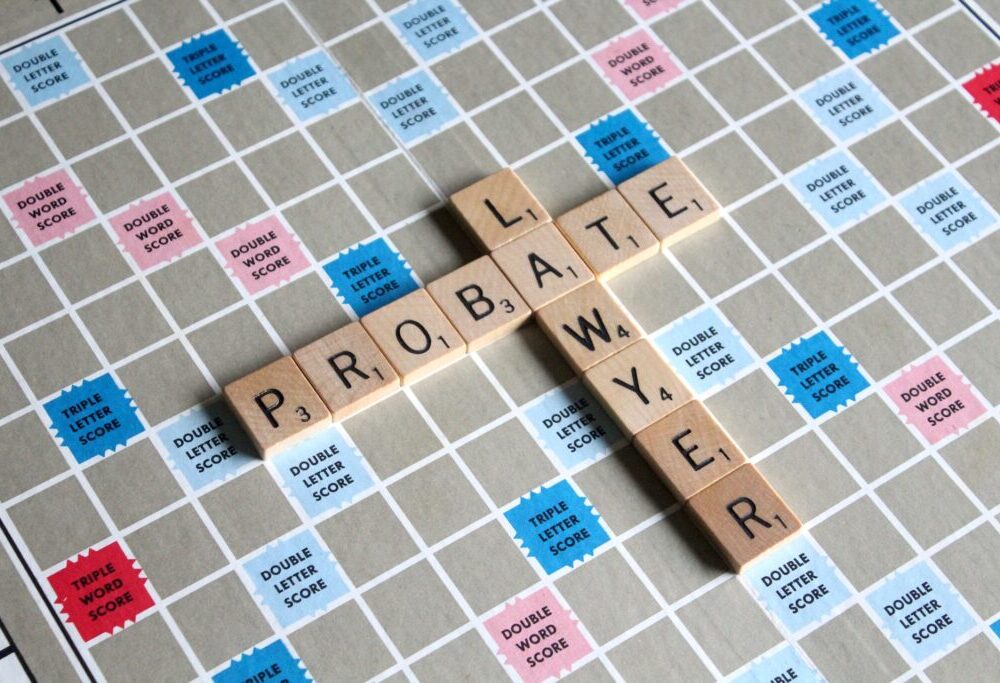Are you a trustee in California facing legal action to be removed from your role? If yes, it’s crucial to understand the different types of affirmative defenses available to you. These defenses can make a big difference in whether you succeed in a legal dispute or suffer financial consequences. This blog post explains some of the most commonly used affirmative defenses that may be relevant in California estate or trust litigation. We’ll cover a range of topics, including due diligence considerations, fiduciary exemptions, and more. By reading this post, you can better prepare to defend against an action for removal in California.
Understanding Your Options: Defenses Available to California Trustees Facing Removal Due to Breach of Trust, Hostility or Lack of Cooperation, and Failure to Account
As a trustee facing removal, you may mount defenses based on various grounds. One classification of these defenses includes those based on breach of trust, claim of hostility or lack of cooperation, and claim of failure to account. Defenses based on breach of trust typically involve arguing that you did not breach your fiduciary duty as a trustee or that any breach was minor and not deserving of removal. Defenses based on claims of hostility or lack of cooperation may involve showing that the hostility or lack of cooperation from beneficiaries or co-trustees was unwarranted or that you tried to resolve any issues. Defenses based on a claim of failure to account may involve demonstrating that you properly accounted for all trust assets and transactions or that any discrepancies were not material.
Defenses Based on Breach of Trust:

When a trustee is accused of breach of trust and is facing removal, there are several defenses they can use to protect the trust’s integrity. Here are eight potential defenses:
1. No Breach Occurred
Before addressing a petition for removal due to a breach of trust, it is important to determine if a breach has actually occurred. This involves examining if the actions in question violated the legal duties of the trustee as outlined in the Trust Law or Uniform Principal and Income Act, or if they went against the terms of the trust itself. By carefully evaluating these factors, you can build a strong defense against the petition and safeguard the trust’s integrity.
2. Act Was Within the Trustee’s Standard of Care
The effective management of a trust depends on the trustee’s ability to handle its assets with care and caution while investing them wisely to achieve the trust’s objectives and purpose. The trustee must use reasonable discretion when exercising their powers, but they must also be prudent in administrating the trust assets.
When the trustee exercises discretion, it is typically required that they do so with reasonable care and caution. If there are restrictions on this discretion, the holder of the power of appointment must also use the power prudently to ensure that it aligns with the intended purposes of the trust.
As long as the trustee makes a reasonable effort to follow these standards, they will not be held responsible for a breach of trust, even if their actions do not result in success, as long as the underlying terms of the trust are satisfied.
3. Act was Expressly Authorized by a Trust Instrument
The law allows the person who creates a trust (the settlor) to have a say in how the trustee manages the trust assets by outlining specific instructions in the trust document. The settlor can give the trustee more or less flexibility in making investment decisions or exercising ordinary care. This can help the trustee perform better over time. If the trustee faces legal action, they can defend themselves by showing that they followed the instructions provided in the trust document. This defense can help prevent allegations of breaching the trustee’s duties. Court cases such as Tubbs v. Berkowitz and Trolan v. Trolan show that the trustee has the right to act within the legal constraints set by the court, which is important for the trust to continue operating smoothly.
4. Breach was Immaterial
If a trustee is accused of breaking their duties but can show that they acted reasonably and honestly, the court can excuse them from being held fully or partially responsible for the breach. This is according to Probate Code section 16440(b). Additionally, if the breach was insignificant, the trustee may argue that there are less severe ways to address the issue instead of removing them from their position. This was the case in Orange Catholic Foundation v. Arvizu (2018) 28 Cal. App. 5th 283, 293–294, 239 Cal. Rptr. 3d 60.
5. Act was Taken by Agent
If an agent working for a trustee breaches their duties, the trustee can defend themselves against being removed from their position by showing that they met the standards for delegating tasks to the agent. These standards include carefully selecting the agent and providing adequate supervision, according to sections 16012(b), 16052(a)(1), (3), and 16401(b)(3), (4) of the Probate Code. However, it’s important to note that there are some exceptions specified by law (see Probate Code section 16401(a)). Generally, the trustee is not held responsible for the actions of the agent (Probate Code sections 16052(c) and 16401(a)). This raises the question of whether it’s necessary to remove the trustee if they followed proper delegation procedures or if removing the agent would be more appropriate.
6. Petitioner Consented to the Action
The Probate Code allows trustees to make certain decisions and get approval from beneficiaries. However, suppose a beneficiary gives informed consent before the decision is made. In that case, they can’t later blame the trustee for breaking their duties because of that decision, except in certain circumstances where the consent was given under specific conditions. The decision is not fair to beneficiaries.
To avoid any problems, trustees can follow an optional procedure under the Probate Code. This involves letting beneficiaries know about the decision beforehand and giving them a chance to object. If beneficiaries raise no objections, the trustee won’t be responsible to them.
If the trustee followed this procedure and no objections were made, this can be used as evidence that they didn’t break their duties. It also means there’s no reason to remove the trustee from their position.
7. Petitioner Affirmed or Released the Trustee from Breach
If a trustee takes an action that a beneficiary has the option to accept or reject, and the beneficiary consciously agrees to it, the trustee cannot be held responsible for breaking their duties. This immunity can also apply if the beneficiary signs a release agreement that excuses the trustee from responsibility for the breach, as long as they do so with informed consent.
However, even if a beneficiary affirms or releases a breach of trust, it doesn’t necessarily mean that keeping the trustee in their position is in the best interests of the trust or its objectives. It’s important to note that affirming or releasing a breach of trust may not have as big of an impact on the decision to remove the trustee as it would in other cases where compensation is being sought from the trustee.
8. The Breach was Isolated and Unlikely to Recur or to Affect the Trustee’s Failure
In order to ensure that a trust is managed efficiently in the future, there are times when it’s necessary to remove a trustee. It’s crucial to understand that the purpose of removal is not to punish the trustee but to ensure that the trust is administered effectively.
While courts are generally reluctant to remove trustees, any violation of trust, no matter how small, can have negative consequences on the trust’s future operation. Even if a trustee argues that the breach was a one-time incident that has been resolved, the well-being of the trust’s beneficiaries is of utmost importance. Therefore, removing the trustee may be the most appropriate course of action.
9. Less Drastic Remedies are Available
When a trustee violates their duties, the petitioner may try to remove them, but the trustee can argue that there are less extreme ways to protect the beneficiaries. If the violation is not severe, other remedies are available. For example, the trustee may be ordered to carry out their duties but prevented from violating the trust. They may have to pay compensation or provide some other form of restitution to the trust, and someone else may be appointed to oversee the trust property temporarily.
The trustee’s actions may be undone, and they may have their pay reduced or eliminated. The trust property may be traced to recover any property or proceeds that were disposed of improperly. Finally, any other remedy provided by law or common practice may also apply.
Defenses Based on Claim of Hostility or Lack of Cooperation

Trust litigation can involve hostility between trustees and beneficiaries, but courts require a demonstration that such hostility interferes with due trust administration before removing the trustee. Lack of cooperation or hostility must impair the administration of the trust to warrant removal. Additionally, situations such as breach of trust, unfitness, inability to perform duties properly, and lack of proper action can also prompt the removal of trustees. If no legal grounds for removal exist, the trustee can argue for their retention.
Conduct Will Not Impede Administration of Trust and Settlor was Aware of the Conflict
In trust disputes, trustees and beneficiaries may not get along, but simply not liking each other is not enough to remove a trustee. Courts require evidence that the hostility between them is affecting the management of the trust. If there is a lack of cooperation or hostility between trustees or beneficiaries that does impair the management of the trust, removal may be justified. Other reasons for removal include breaching the trust, being unfit or unable to perform duties, or not taking proper action. If there are no legal grounds for removal, the trustee can argue to stay in their position.
Defenses Based on Claim of Failure to Account

Failure to provide an account is a common claim against trustees in cases seeking their removal, and providing the account can be a strong defense strategy. Other defense strategies include arguing that the request for an account is untimely, that the trust instrument waives or limits the duty to account, or that the petitioner has not complied with the procedure for compelling an account or report. Here are some defense strategies when a petition seeks to remove a trustee for failure to account:
1. If the Trustee Has Been Remiss in Accounting
When a trustee has not kept accurate accounts, providing the requested account to the petitioner as soon as possible can be a strong defense strategy. By promptly providing the account, the trustee can show they are willing to cooperate and correct errors or oversights. If the petitioner seeks removal of the trustee based on a failure to account, providing the account may demonstrate that removal is unnecessary.
2. Arguing that the Petitioner’s Request is not Timely
If a trustee has complied with the requirements to provide an account “at least” annually on the termination of the trust and a change of trustee, failure to account would not typically be considered a breach of trust. Therefore, it would not be a sufficient reason to remove the trustee. As a result, the trustee may argue that the petitioner’s request for an account could be more timely if it falls outside these requirements.
3. The Trust Instrument Waives or Limits the Duty to Account
If a trust instrument includes a provision that waives or limits the trustee’s duty to account, this may be a valid defense against a petition seeking removal for failure to account. However, it’s important to note that such provisions may be subject to certain exceptions, such as instances where there is evidence of misconduct by the trustee. Overall, the validity of this defense will depend on the specific language and circumstances of the trust instrument.
4. Argue That the Petitioner Has Not Complied with the Procedure for Compelling an Account or Report
If a beneficiary wishes to petition for an account or report, they must follow the proper procedure. For example, if no account has been filed within the last six months, the beneficiary may be allowed to petition. Additionally, suppose the trustee fails to submit an account within 60 days of a written request by the beneficiary. In that case, the beneficiary may also be permitted to petition the beneficiary (Prob. Code §17200(b)(7)). If the proper procedure is not followed, the petition for removal and account may be considered premature.
Takeaways: It is Possible for a Trustee to Mount a Defense from Removal

So, with these strategies in your arsenal, you can muster an informed defense against a petition asserting failure to account against trustees under Prob. Code §17200.
In conclusion, acting as a California trustee is an important responsibility, and it is easy to be liable for removal if the fiduciary duties laid out by California law are not fulfilled. Seeking assistance from experienced legal professionals can help ensure that the right strategies are implemented to protect the property and provide confidence in fulfilling the trustee’s fiduciary duties. With the complicated language of survivorship, creditors, and minors involved with a trust, many specific areas must be examined to use the defenses of a removal action. If you or someone you know is seeking legal guidance on a trustee-related issue and could use advice on defending against removal, contact OC Trial Group, APC, who have skilled attorneys able to assist. Our team will help provide an understanding of trust law and maintain it throughout the case to protect your interests even when faced with this complex circumstance.
The post California Trustee Defense Strategies in Removal Actions: Understanding Your Options appeared first on OC Trial Group.

